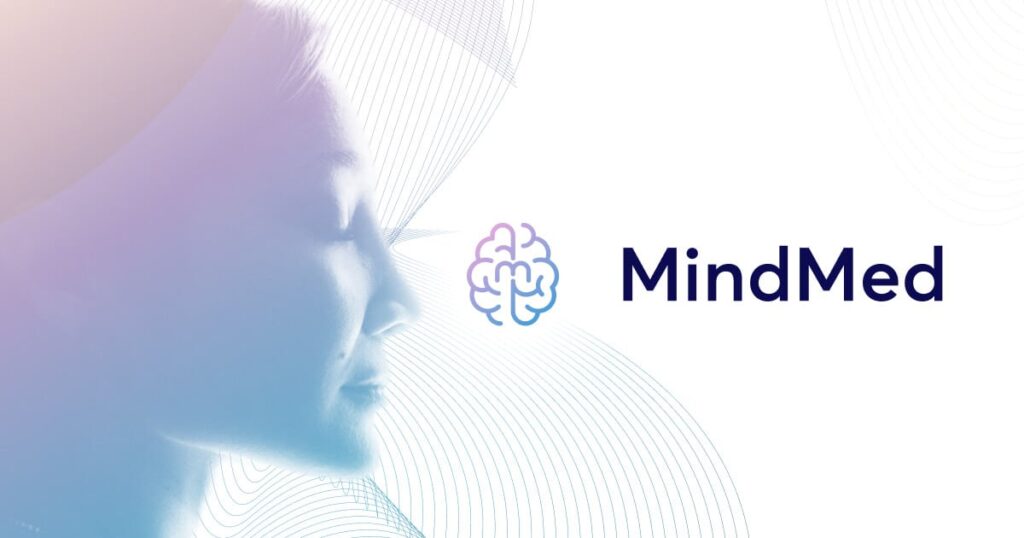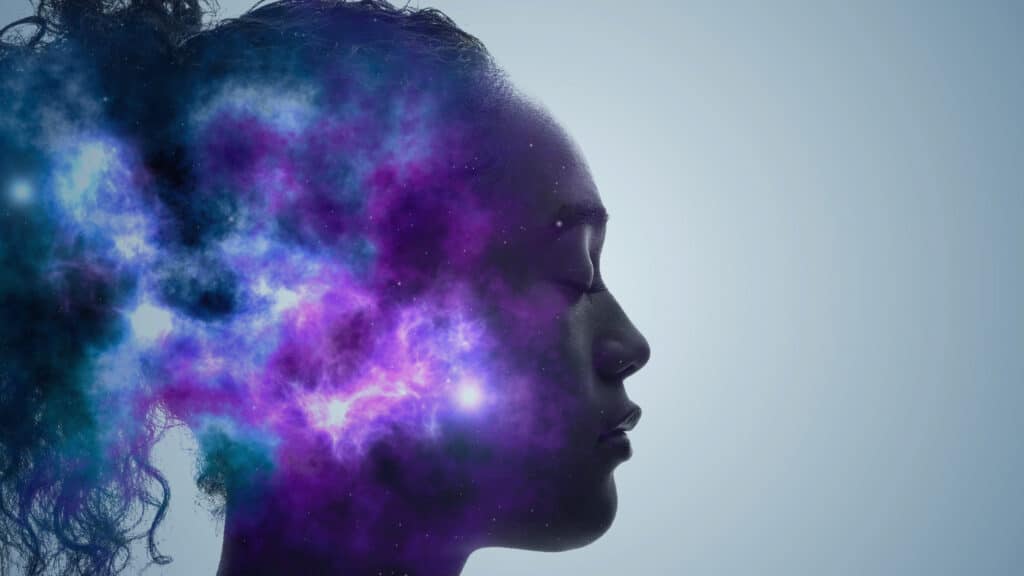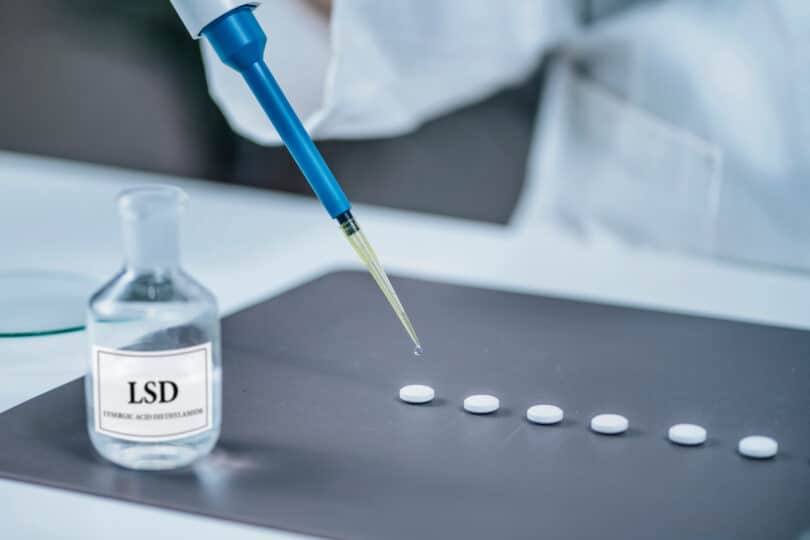A new drug known as MM-120, which is a more pharmacologically optimized form of popular psychedelic lysergic acid diethylamide (LSD), just entered phase II clinical trials for the treatment of generalized anxiety disorder (GAD) and other mental health disorders.
What is LSD?
LSD is a potent hallucinogenic which belongs to a class of drugs called ergolines (more specifically, LSD is an ergoline-based tryptamine compound), meaning it’s derived from the ergot fungus. Despite this, it still requires a lot of human processing to become LSD, so it’s not considered a natural entheogen like psilocybin or mescaline. LSD was first synthesized by Swiss chemist Albert Hoffman in 1938, but it wasn’t until 1943 that its effects were fully realized when Hoffman accidentally ingested a small amount from his lab.
As a psychedelic, standard effects include various sensory hallucinations (visual, auditory, sensory, olfactory, etc.), as well as altered perception, feelings, and thoughts. Something that makes LSD unique is the duration and intensity of the hallucinogenic trip, which often ranges from 6 to 12 hours but has been reported to last even longer. This could be due to the way the drug binds to receptors in the brain.
Like other tryptamines, LSD interacts with serotonin receptors, in particular, receptor 5-HT2AR. Something interesting that happens when LSD binds to 5-HT2AR, is that the receptor closes over the molecule, preventing it from leaving the brain quickly. This could explain why the effects of LSD seem to last after it has left the bloodstream.
From this point, the serotonin receptor will activate two signaling pathways between the cells, via G-proteins and β-arrestins. LSD function primary through the latter, but that’s not always the case. Overall, ergoline compounds can be a bit mysterious in their processes, because different subgroups can have different effects on serotonin receptors. Add to that, newer research found that ergoline compounds can actually modify the structure of the receptors they interact with, in order to activate different effects.
MM-120 clinical trials
MM-120 (lysergide d-tartrate) is a new drug developed by MindMed, a biotech company the focuses on psychedelic-based medications. This drug is a “new and improved” version of LSD that is currently undergoing clinical trials for the treatment of generalized anxiety disorder (GAD). The most recent results from phase II of testing found that the drug candidate, particularly at the 100 µg dose, “demonstrated effectiveness, significantly reducing anxiety symptoms.”

Dr. Daniel Karlin, chief medical officer of MindMed, explained the key findings in an interview with Medical News Today: “MindMed conducted this study with participation from 198 patients, all of whom suffered with a primary psychiatric diagnosis of generalized anxiety disorder (GAD), across 20 clinical sites in the United States.”
“Participants were divided into 5 study arms; each arm received a single dose of a lysergide-based drug candidate, called MM-120 (lysergide d-tartrate), or a placebo,” Dr. Karlin continued. “Among the four groups that received a dose of MM-120, doses were 25, 50, 100, or 200 µg of MM-120. Importantly, no form of additional therapy was given to any participant. The study design evaluated the stand-alone effects of the drug candidate, MM-120,” he added.
Karlin continued: “The data available to us at this time show that patients experienced meaningful and lasting symptom reduction. Four weeks following a single dose of MM-120, 78% of participants who received either a 100 or 200 µg dose measured as having a clinically significant response to the drug. 50% of participants who received the 100 µg dose were considered to be in clinical remission at Week 4, meaning that the patient no longer suffered from clinically significant symptoms of GAD.”
Psychedelics for mental health disorders
Over the years, psychedelics have proven themselves to be one of the most successful treatment options for many different mental health disorders. An overwhelming 82% percent of Americans are in favor of accelerating research on this front, but federal regulations have really been a stick in the wheel of progress here. Given the introspective and sentient nature of psychedelics, it makes sense that using them therapeutically can help a person be more honest, open, and transparent.
Although discussion of using psychedelics therapeutically is pretty fresh for most of us, many cultures have been utilizing entheogens medicinally and in religious rituals for thousands of years. Even scientists in United States and Europe were conducting research on psychedelic compounds for the treatment of mental illnesses, and it all really began to gain traction throughout the 1940s and 1950s.
In 1943, Swiss-chemist Albert Hofmann first synthesized lysergic acid diethylamide and by the early 1950s, psychiatrist Humphry Osmond had already pioneered a treatment regimen using LSD to cure alcoholism and other mental disorders; with relative success might I add. Osmond is the one who coined the term ‘psychedelic’, meaning ‘mind manifesting’. He also oversaw author Aldous Huxley’s infamous, therapeutic mescaline trip in 1953.

Numerous psychedelic studies were in the works during that time, but all that research was derailed for social and political reasons when entheogenic compounds were banned at the start of the 1970s. Fast forward a few decades, and we are now beginning to see a growing acceptance of these compounds, especially the naturally-derived ones, and thus, an uptick in research. One of the main areas of interest is how psychedelics can help with mental health disorders such as depression, PTSD, and addiction.
“The evidence suggests mystical experiences help people gain a new perspective on their issues,” said Matthew Johnson, the Susan Hill Ward professor in psychedelics and consciousness at the Johns Hopkins School of Medicine. “We think the long-term biological changes will be similar to those with successful psychotherapy. Essentially, the person has learned something about this problematic behavior in their life and changed their life as a result.”
Final thoughts
MM-120 is the closest we’ve ever had to a clinically-proven and FDA-approved LSD-based medication. Phase II trials are currently underway, so it’s well on the path to becoming available via prescriptions in select markets, although it could still be some time before we can expect more widespread use of this drug.
Hello readers. We’re happy to have you with us at Cannadelics.com; a news source here to bring you the best in independent reporting for the growing cannabis and hallucinogen fields. Join us frequently to stay on top of everything, and subscribe to our Cannadelics Weekly Newsletter, for updates straight to your email. Check out some awesome promos for cannabis buds, smoking devices and equipment like vapes, edibles, cannabinoid compounds, amanita mushroom products, and a whole bunch more. Let’s all get stoned together!









